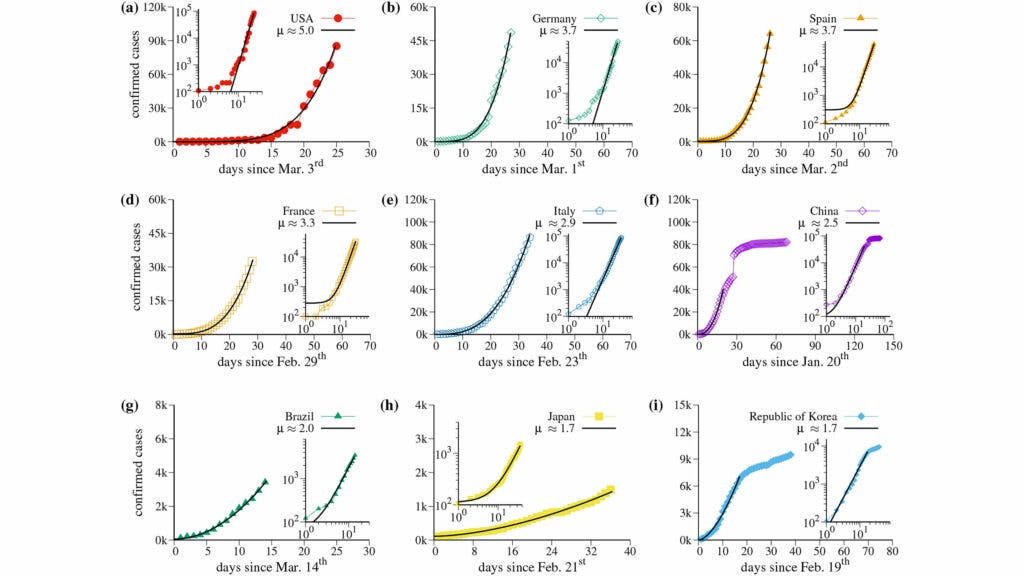A team of researchers looked at correlations between the containment and mitigation actions taken by different countries and highlighted what seem to be the best options to reduce the spread of the virus.

A team of researchers in Brazil analyzed the way that confirmed COVID-19 cases increased across four continents. They wanted to mathematically characterize how the virus spreads and which strategies are most effective in reducing its spread.
“We decided to use our expertise to perform extensive numerical analysis using the real-time series of the cumulative confirmed cases of COVID-19 in order to search for answers about the spreading of this pathogen,” said author Cesar Manchein.
The study analyzed COVID-19 data from Brazil, China, France, Germany, Italy, Japan, South Korea, Spain and the United States. According to their results, the virus commonly increases along a power law curve — growing quickly from only a few cases; on this curve, the social, economic, and geographical features of the area affect the exponent to which the infection spreads.
In other words, if the external conditions are ripe, the infection can spread much faster.
Using numerical modeling, researchers also found a good correlation between how the virus spreads and genetic mitigation strategies. For instance, softer quarantine measures appear to be more inefficient at flattening curves than tighter isolation guidelines.
The study also found that not only testing, but also contact tracing and isolation of asymptomatic individuals is a successful approach to flatten the epidemic curve.
“Our results essentially show that an efficient strategy to avoid the increase of the number of infected individuals by coronavirus combines two actions: Keep to a high level of social distance and implement a significant number of tests to identify and isolate asymptomatic individuals,” said author Rafael M. da Silva.
It’s important to point out that this is just a mathematical correlation, without any causality lines drawn here. It’s also an analysis that only focused on a handful of countries and the results may be heavily skewed by this.
Nevertheless, the researchers want to improve their numerical model using real-world data. Da Silva said he hopes to use these models to test distinct strategies that could avoid the use of long quarantines and see what can work best in a real-life scenario..
“Physics and chaos theory researchers can have a fundamental role in the battle against the coronavirus,” said author Cesar Manchein. “From the theoretical point of view, researchers can use their knowledge and experience to study the time and territorial evolution of the disease.”
The study has been published in Chaos.









